The Perfect Place
The East Woods Natural Area is located in Southern Burlington about 3 miles from the UVM campus. With my write in the rain notebook in hand, I rode my bike down the bike path behind the outdoor track down to the bottom of the path. From there, I took a left down to the road until the intersection of Klinger’s Bread and Domino’s Pizza and turned in there. I parked my bike on the bike rack in the back of the parking lot, and walked about a quarter mile down the trail along the Brook to reach my location. The East Woods Natural Area is a beautiful spot not too far from campus that has a nice Brook running through it with a wide diversity of tree species, which was the main reason why I chose to come here. After the NR lab here 2 weeks ago, I knew this would be the perfect place for the blog.
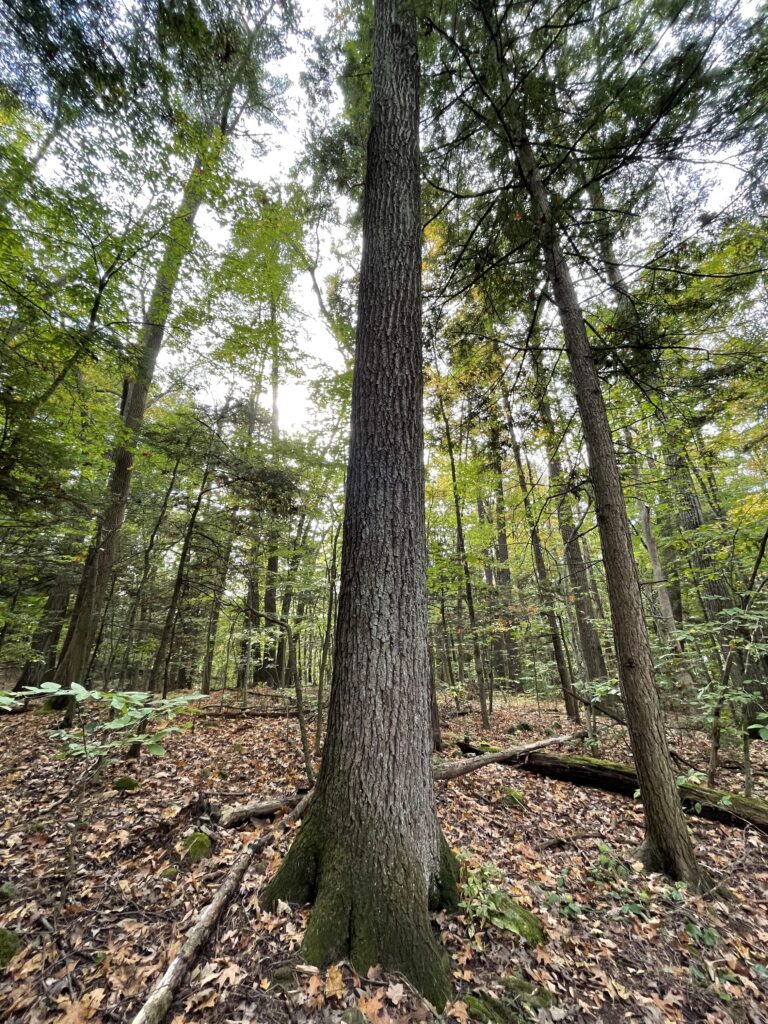
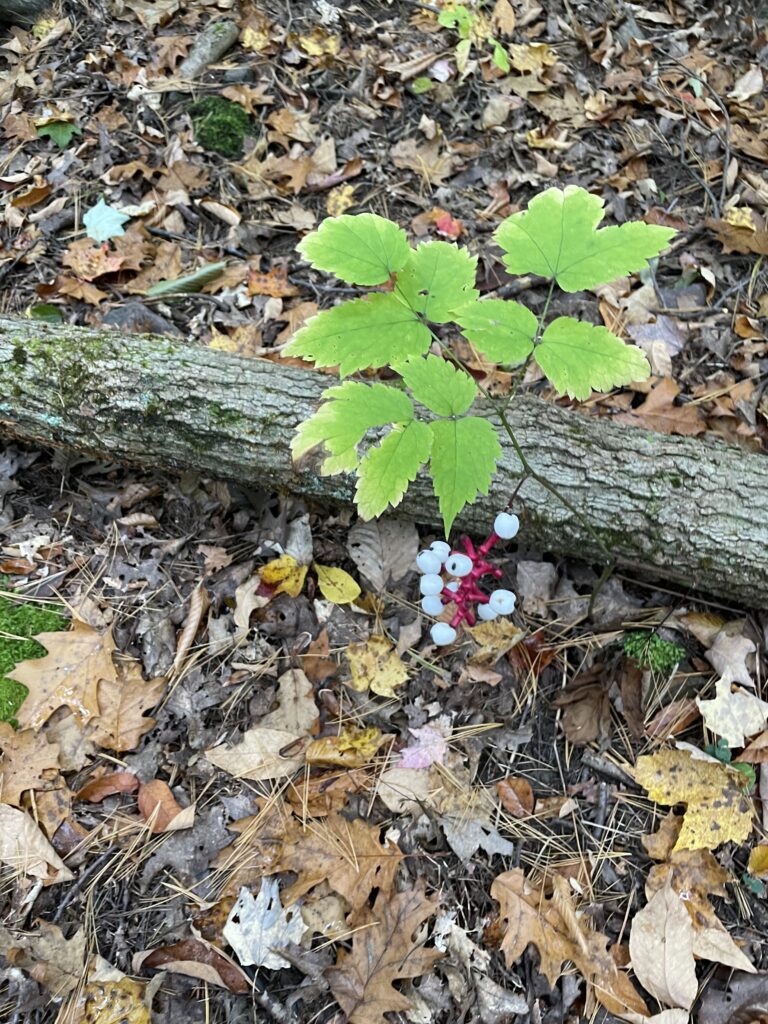
At the site, there was a wide variety of tree and woody plant species present. The most common tree species by far was American Beech. A majority of the understory composed of Beech saplings as well as a good portion of the over story. The other dominant tree specie present was the Eastern Hemlocks, which also composed a majority of the under and over stories. Other species included Northern Red Oak, Norway Maple, Sugar Maple, Red Maple, White Oak, White Baneberry, Eastern White Pine, Striped Maple, White Ash, and Red Pine. A closer look or re-identification of some species may yield different results.
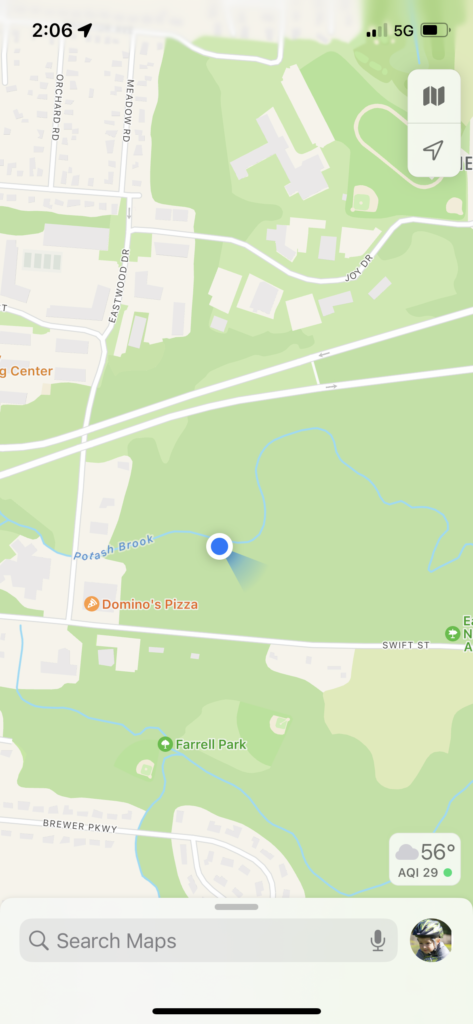
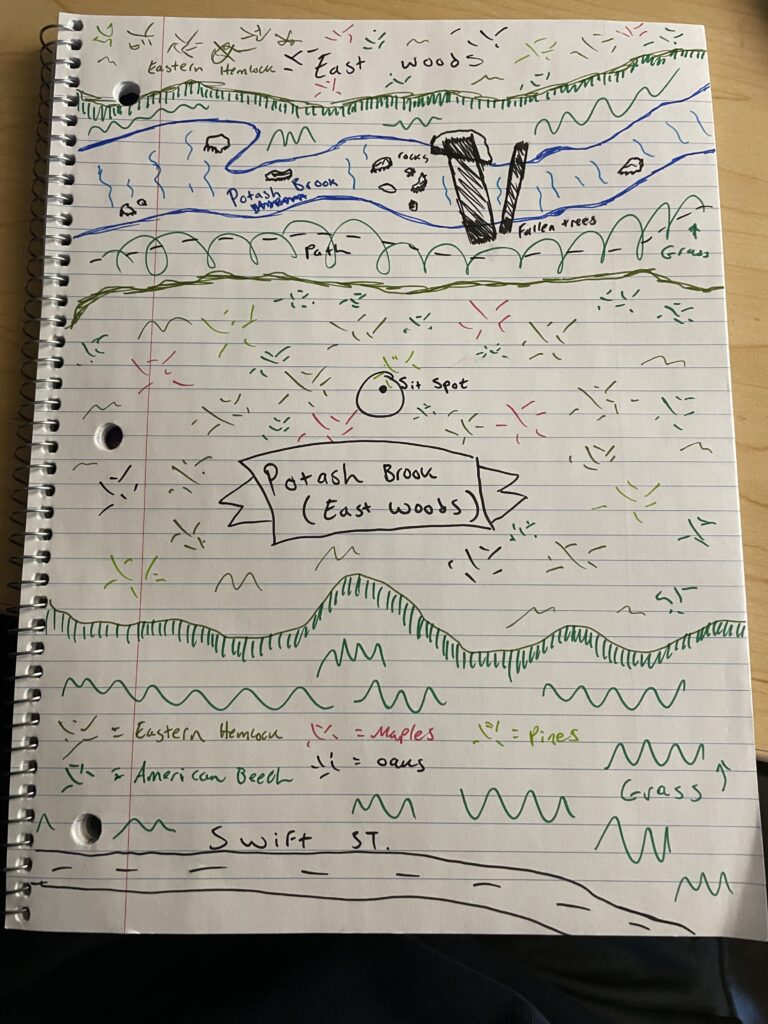
Hand drawn map of the phenology spot. The woods extend out further behind me but the edge of the forest was drawn to better indicate what I was trying to draw.
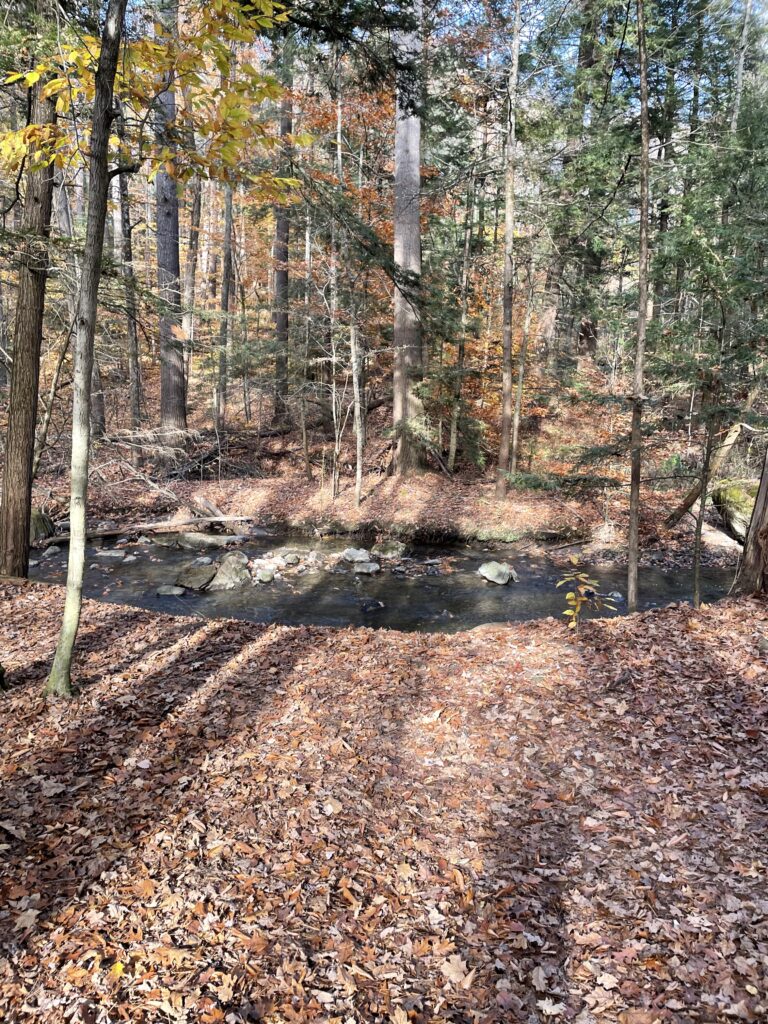
Fall is slowly coming to an end.
Thanksgiving Place
My grandparents house in Croton on Hudson, New York, is a place I go every year for thanksgiving and is one I have grown to love. The ecology here is similar, but also slightly differs than that of the ecology at UVM. To start, there is a larger portion of coniferous trees, mainly spruces, cedars, and pines here and the trees and landscape feels older than that of Burlington’s. While deer are popular up in Vermont, it is rare that I actually see them out in the wild, but here they were out in the backyard. I scanned similar species here that I saw in Burlington, such as White Pines and Oaks, but there were some new species I have never known the name of here, such as Honey Locust, Bradford Pear, as well as many other smaller trees and woody plants.
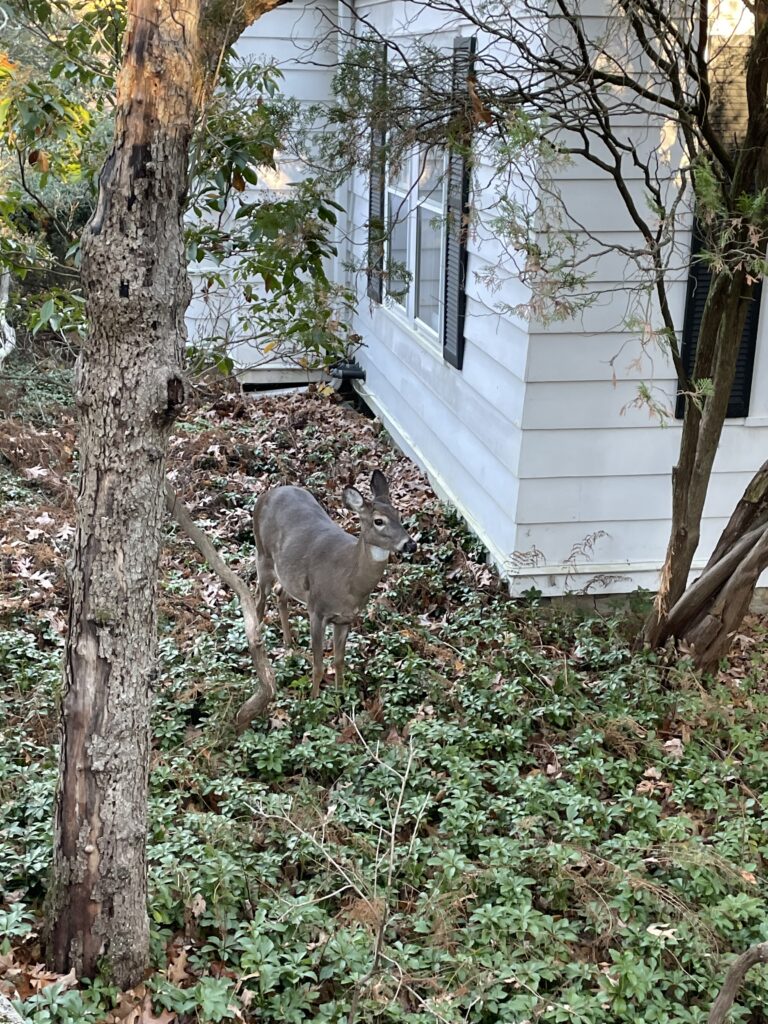
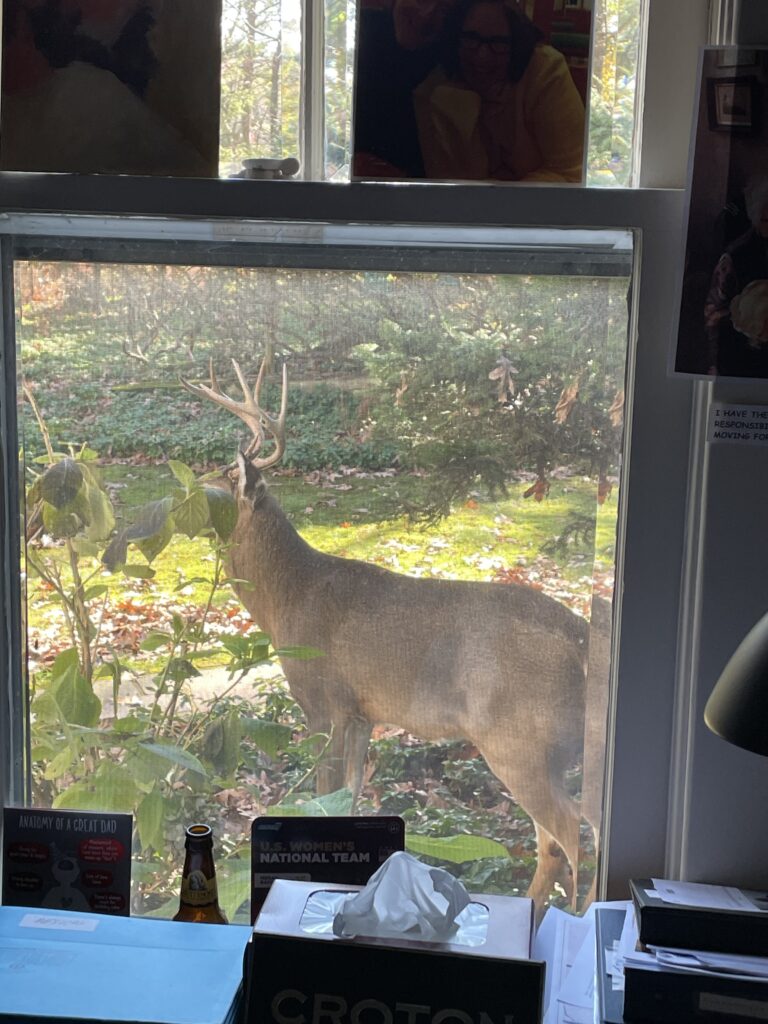
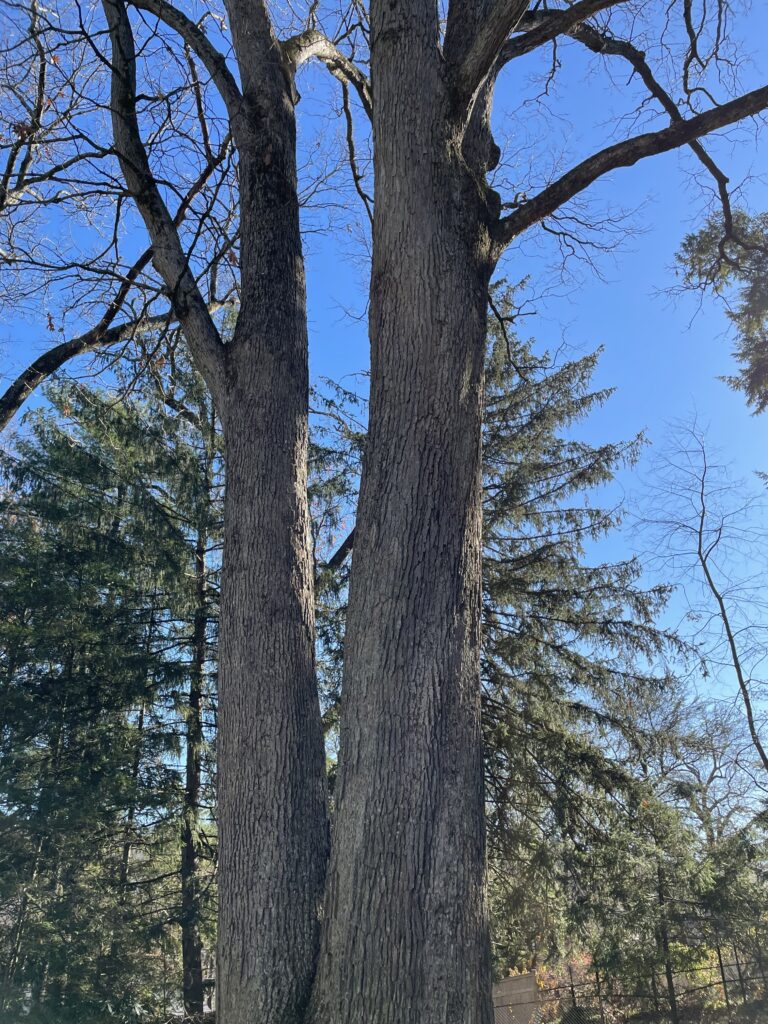
Winter Phenology
As winter begins to settle in in Vermont, the temperatures get colder and the landscape turns into a brown, dark green, and white mix. Most of the trees in Potash Brook have lost their leaves, except for a few American Beech leaves holding onto the last of theirs. The dominance of coniferous trees can be noted as the dark green needles of the numerous Eastern Hemlocks can be seen throughout the area. Some snow and ice covers parts of the ground from recent snow events, although most of it is melting away with temperatures finally reaching above freezing. The ground is completely covered in leaves and the sound of the brook can be heard more clearly as the water is flowing faster from all of the snow and ice melting away. On the walk over to my spot, I noticed new trees that have fallen across the brook, which I of course had to walk across them for fun, hoping to not slip in. Not many signs of animals can be seen besides the few remaining species of birds calling to each other, and the occasional squirrel sighting. Only 3 months ago, everything here was still green and lively, now it is dominated by browns.
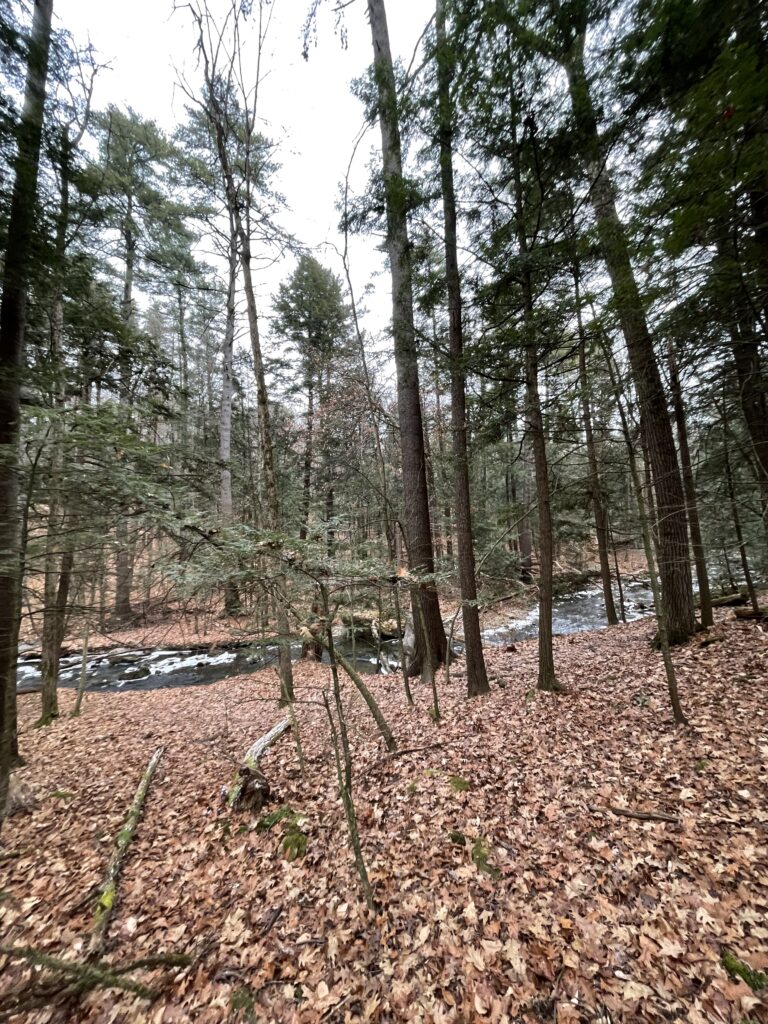
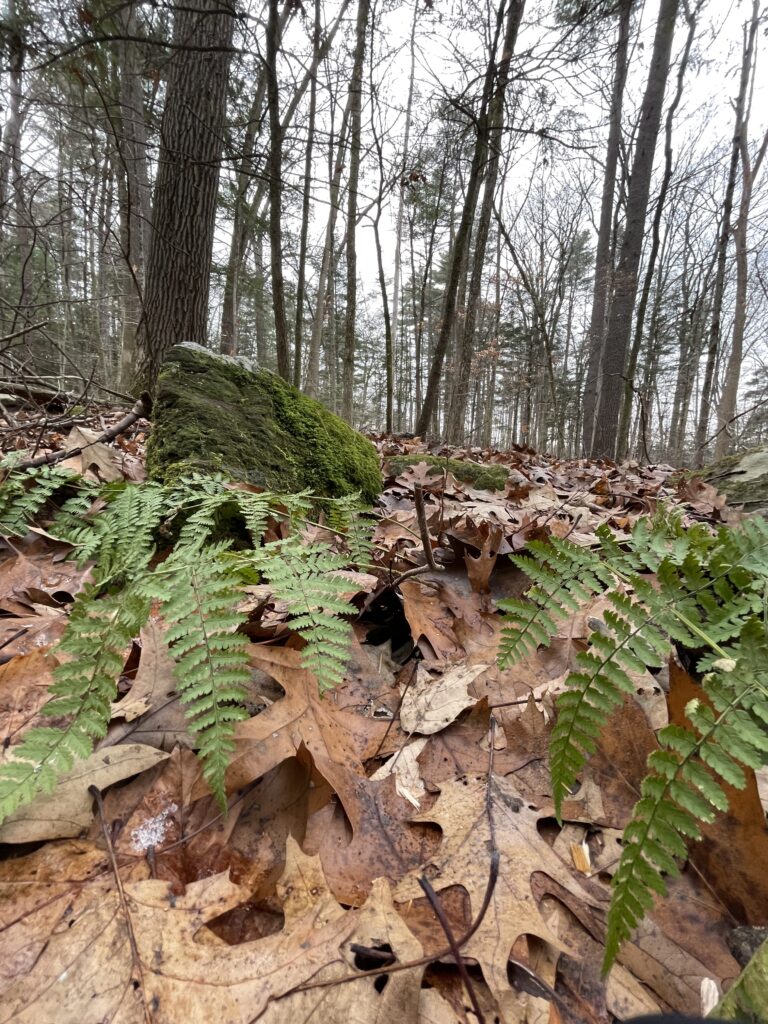
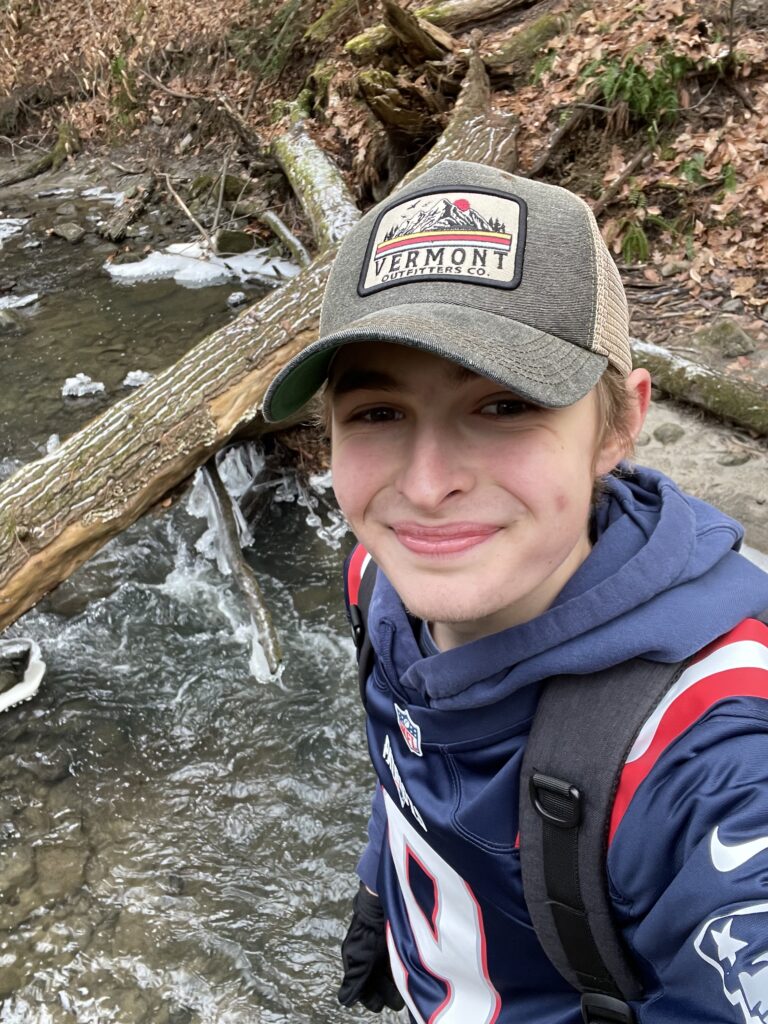
Potash Brook has been a great location to come down to every few weeks, and I enjoy being outside and surrounded by such a variety of trees that I can now easily distinguish between. The sound of the water running in the background was very calming and made me feel at peace. The small ferns on the ground gave some life to the ground, and I even scanned some new species of ferns/small plants that I have never seen before. This location has only deepened my connection with the environment, and I will continue to come back to this place to notice what other changes are happening in the area. Below I attached more images from my exploration of Potash Brook after spending time at my spot today. A fallen tree created a cool little waterfall, and one Hemlock tree trunk split into 5-6 different large trees.
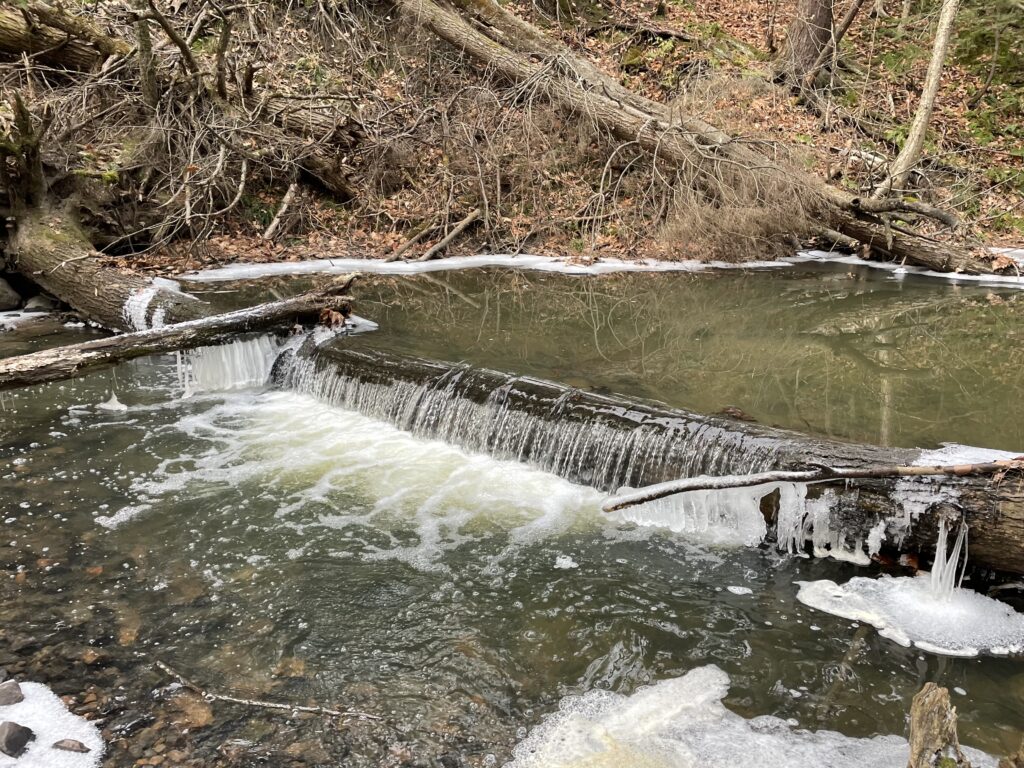
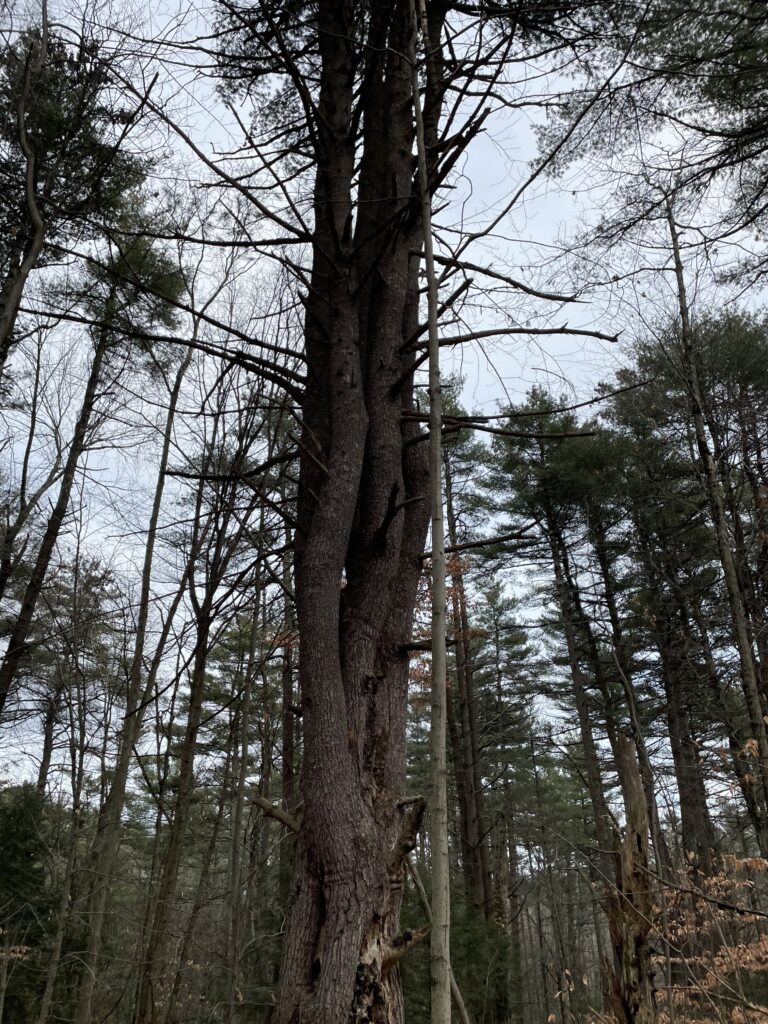
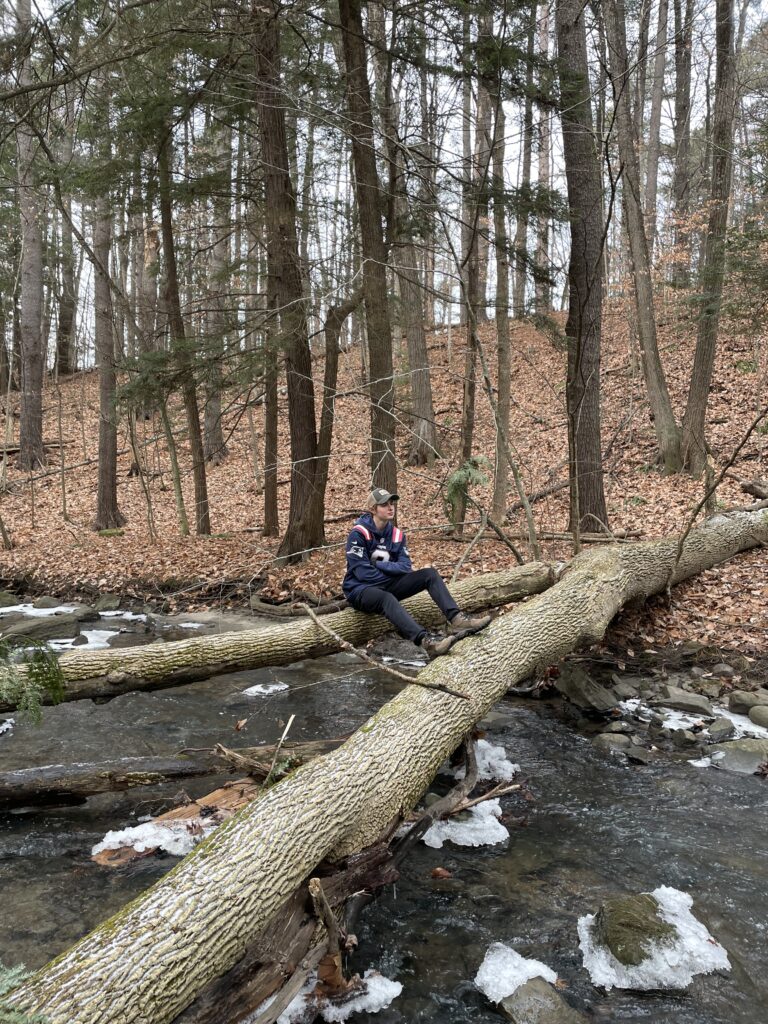
A New Location – Second Term Phenology Spot: Centennial Woods
For this semester, instead of making the trek down the bike path to Potash Brook, I instead decided to choose somewhere closer, as winter travel is more difficult. This new location is located not too far from campus in Centennial Woods, and is a few minute walk into the woods from the East Ave entrance. I followed the path in until I found a suitable spot by the small river that flows through the area because it is nice to hear the sound of rushing water. Also, since I was now not near a busy highway, I could better hear the sounds of nature, mainly that of birds chirping in the trees, which was more difficult to point out at Potash Brook.
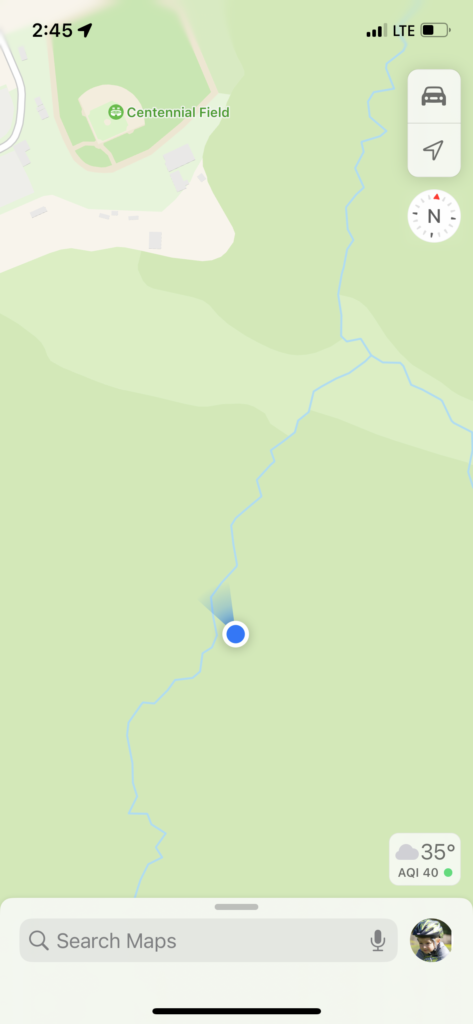
Although there is no trail map of centennial woods on apple maps, this location takes about 10 minutes to walk to from the entrance and is not far from the main path. Other sets of people’s footprints were nearby, so I wonder if anyone else’s phenology spot is near here.
Although it would be nice to try and figure out what animal footprints were nearby in my spot, most of the snow had melted in my area, and what was left was an icy and slushy mess of pinecones from the Eastern White Pine and Eastern Hemlock trees that towered over my spot.
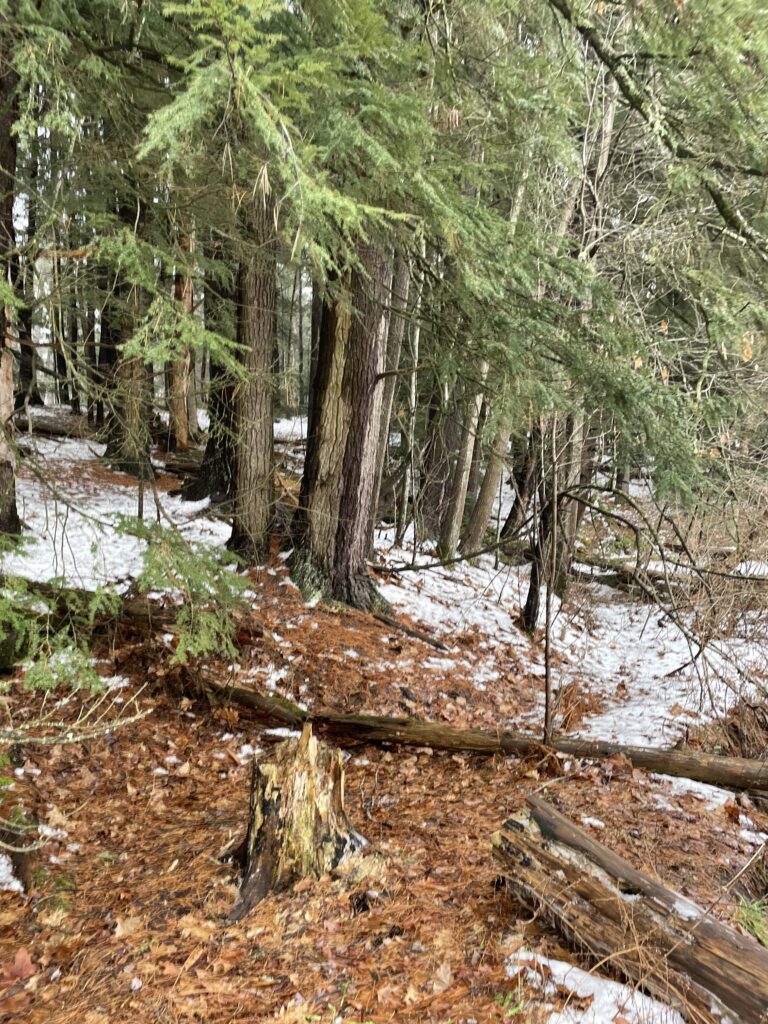
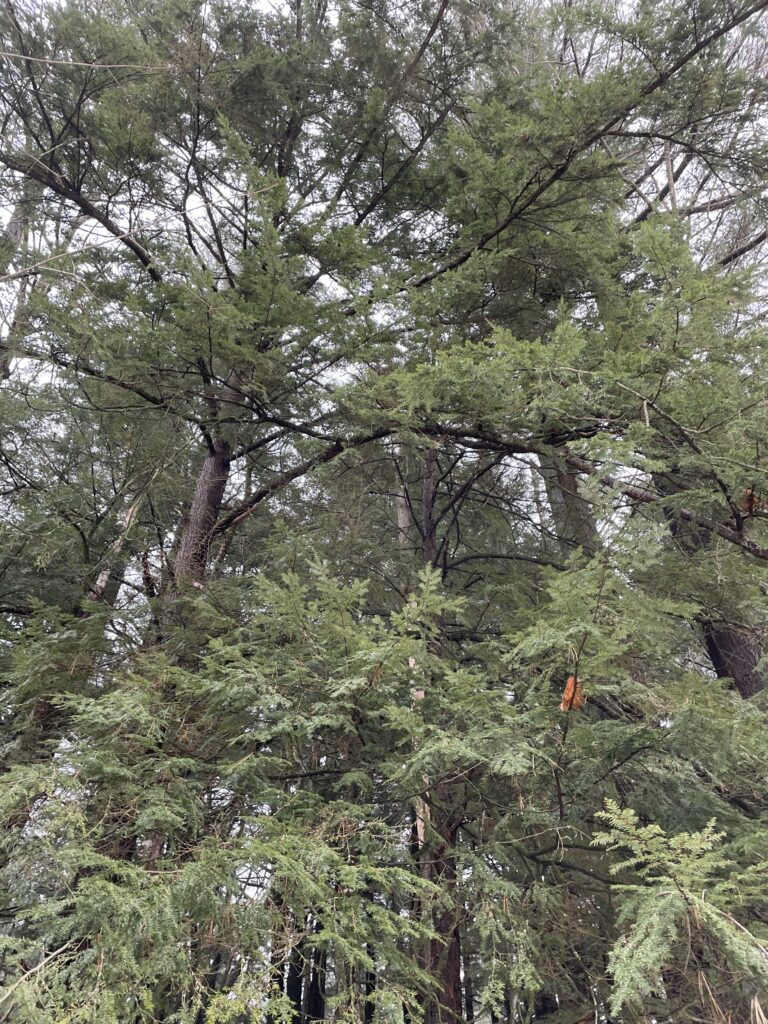
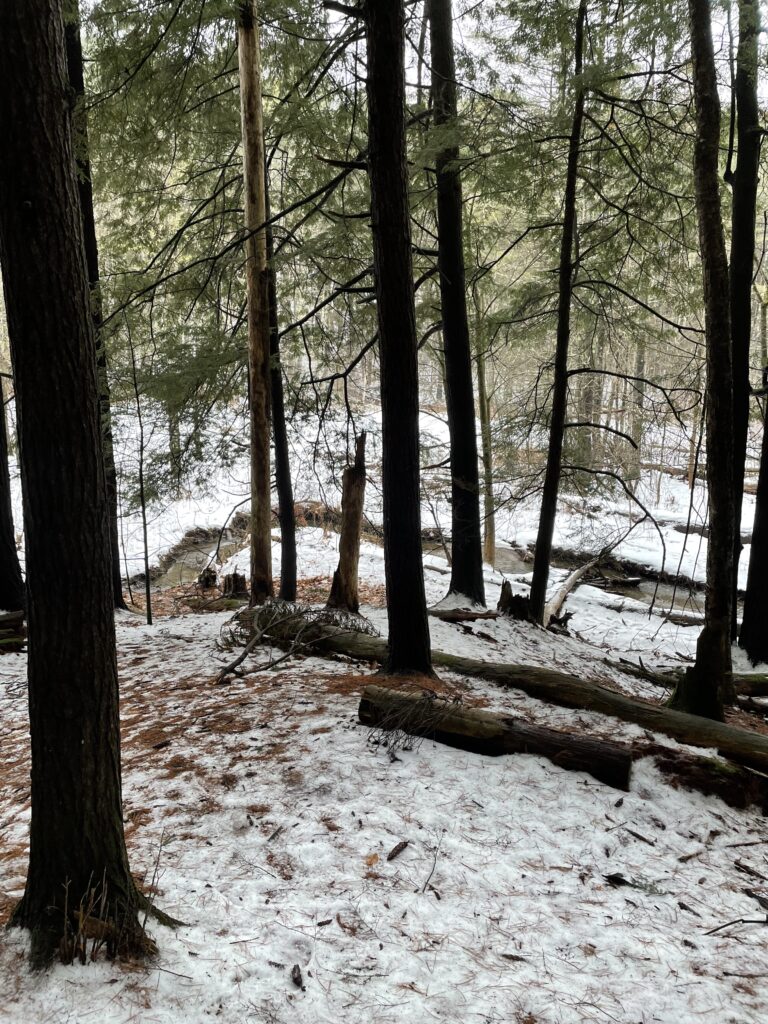
On the way into my spot I kept my eyes peeled for any potential tracks that I could try and decipher, but most of the other non-human footprints by the trail seemed to be that of dog footprints from people brining their animals out on a walk. However, some of these may have been fox footprints or some other kind of smaller canine.
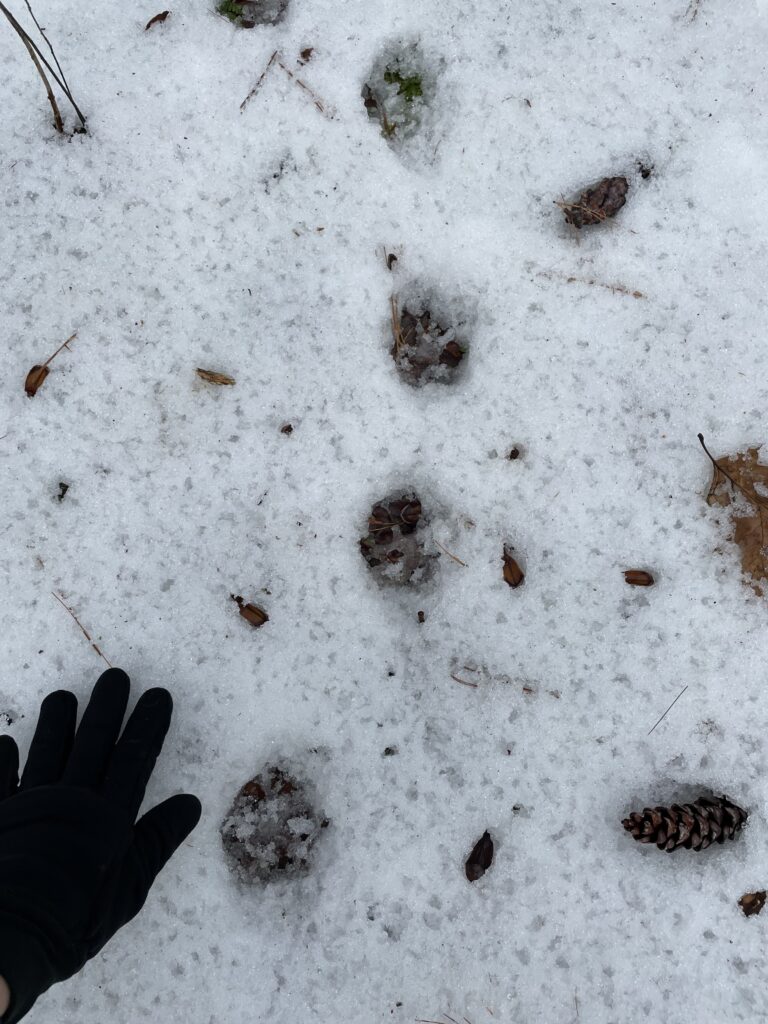
As you can see, the snow is mainly icy now and it is hard to distinguish what these paw prints actually are. These were taken near my spot, but not in the area of my actual spot. Seems to be just someones dog, but again, I am no expert so I am probably wrong.
iNaturalist Tracking
What a snowless February it has been! Is what I would have said if I wrote here the day I went out and did my tracking. Of course, the day after Finnian and I decide to go down to Centennial Woods, it snows. Fortunately, we still saw some cool animal prints in patches of mud through the forest, and especially down by the side of the stream. I went back to the location near my current phenology spot, and noticed what seemed to be some tracks of a raccoon.
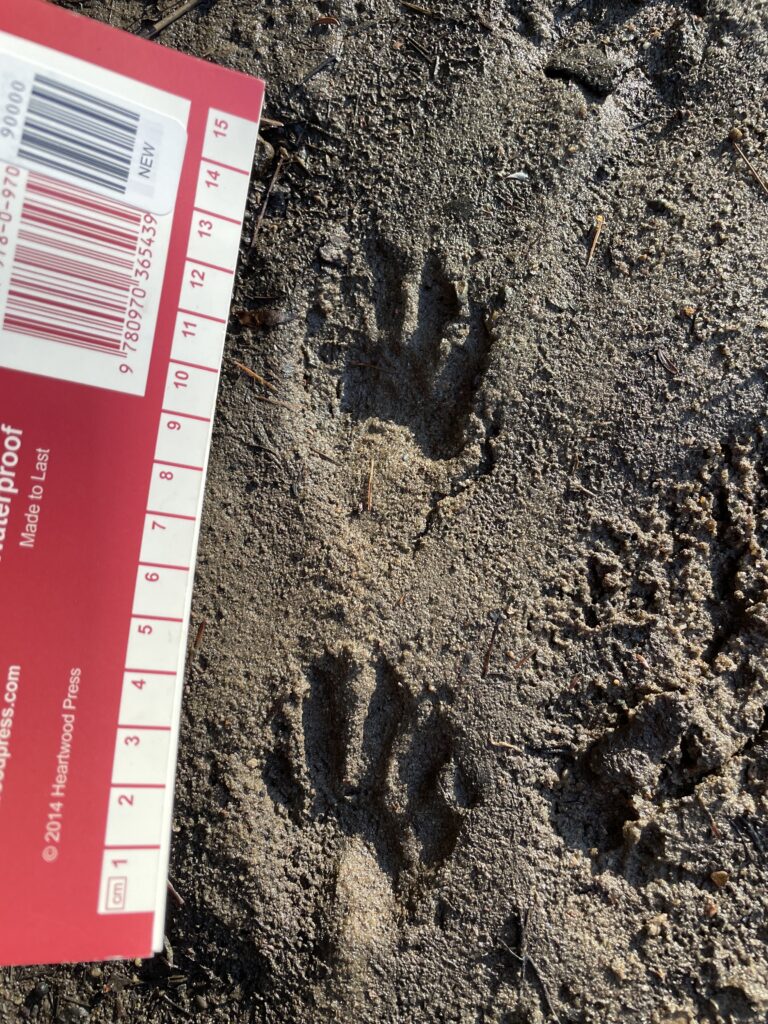
These appear to be raccoon prints as the presence of 5 digits and a human-like shape to the hand and relative small print pointed me in that direction. The woods do not have a great connection, so I am not 100% sure if this actually uploaded to iNaturalist successfully, but I did try!
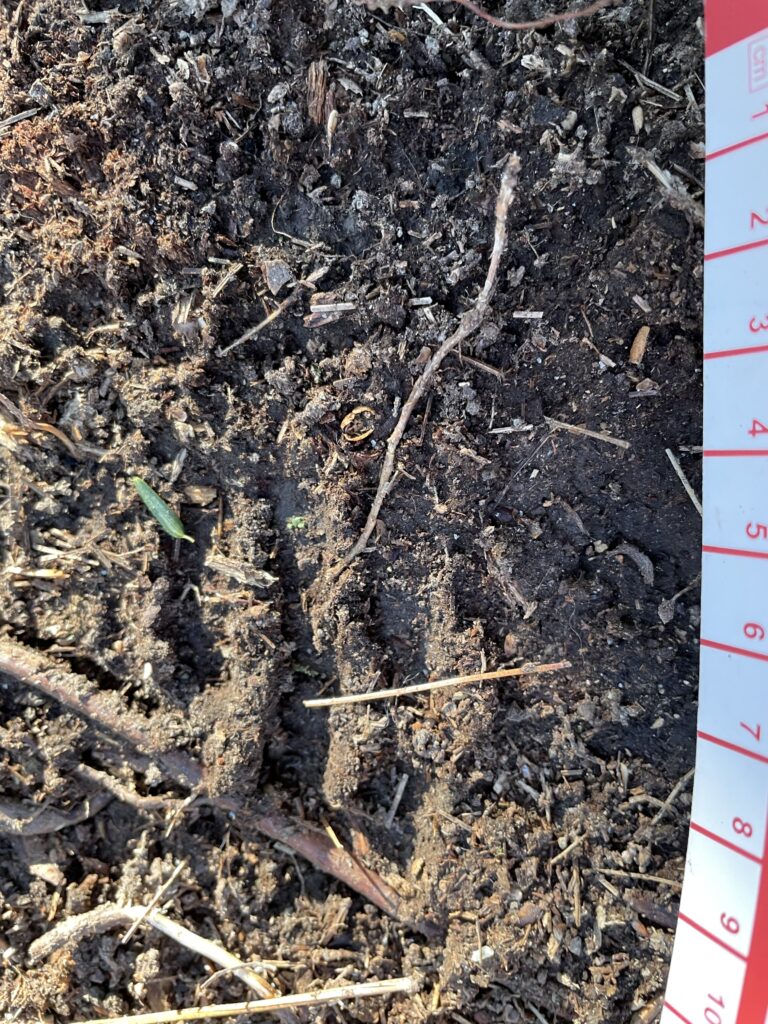
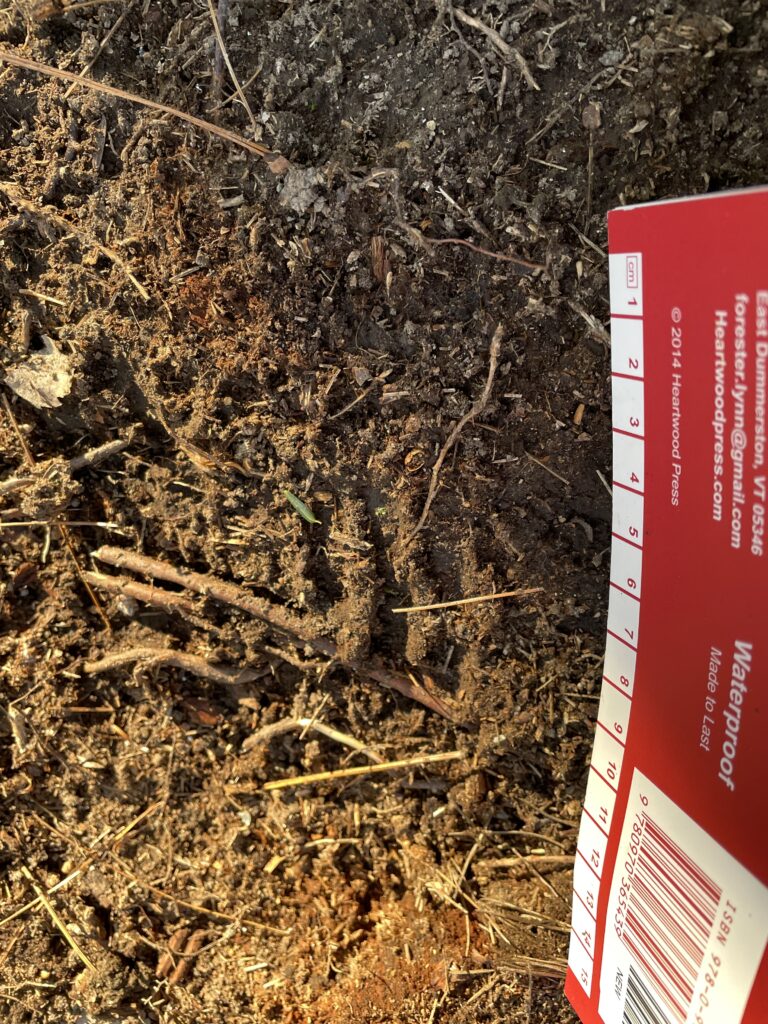
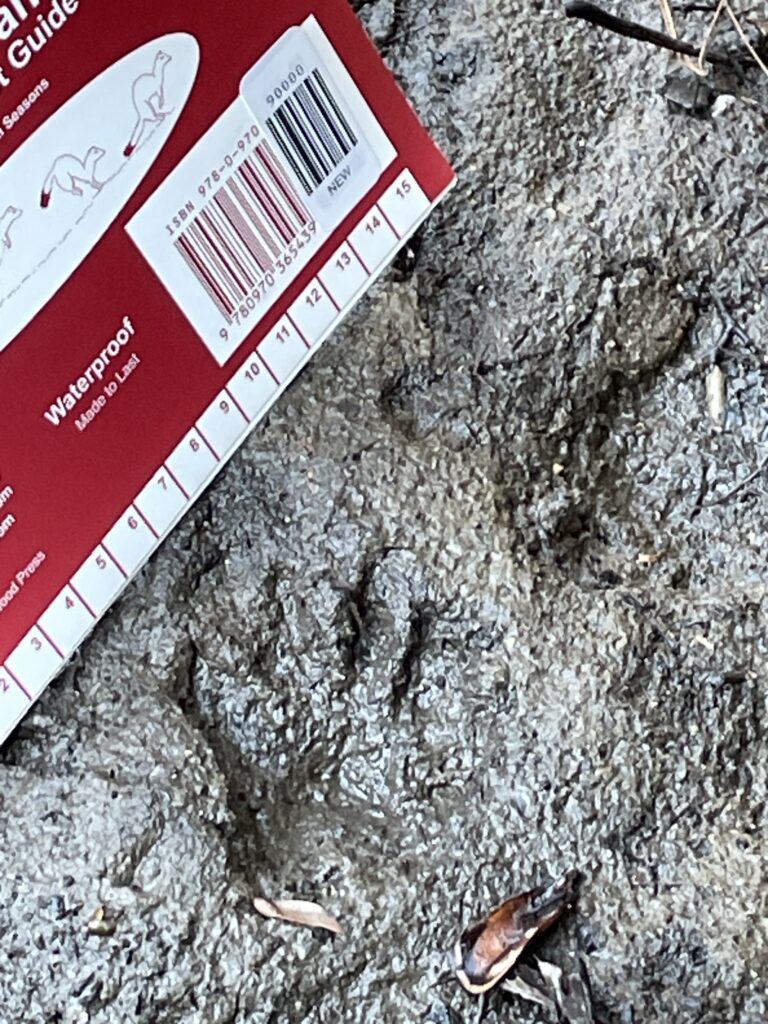
More raccoon prints? The ones on the left could possibly be a skunk, but it was hard to tell.
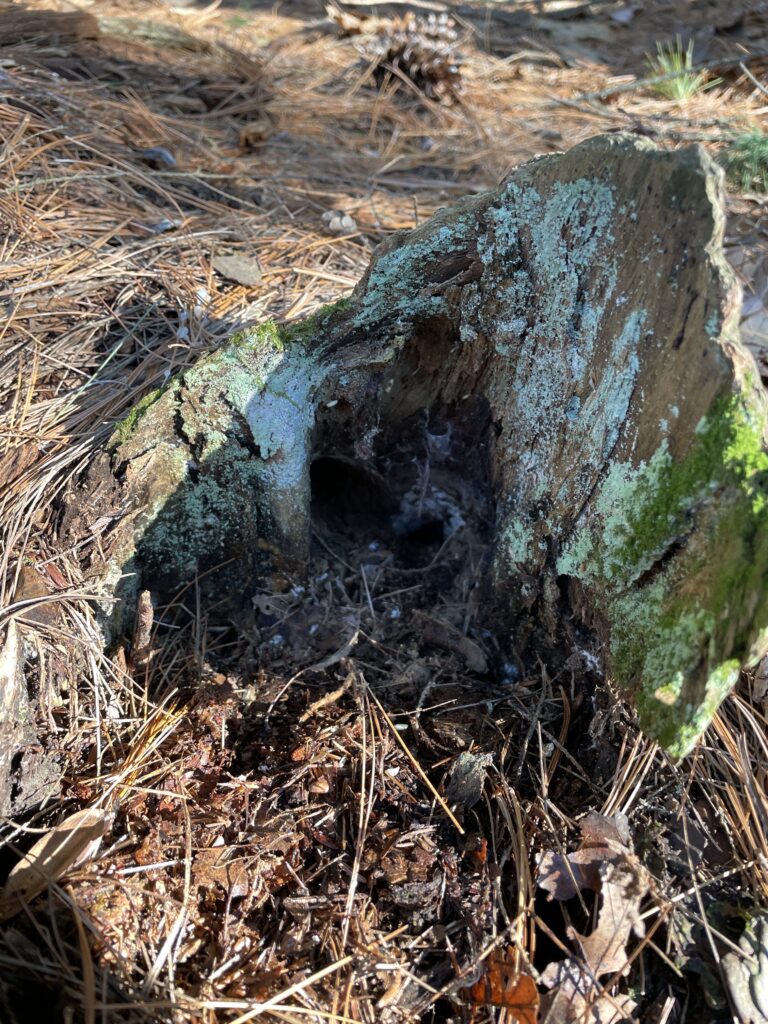
At my direct phenology spot I noticed many holes in the ground and under the base of some trees which I think belong to a small rodent (possibly a Vole?)
Also, here is this cool clip of me knocking down a dead tree. (I’m so strong)
Spring is FINALLY here!! (Or is it??)
When assigned to go back to my original spot, I was excited to see what has changed and to view the location as spring has started to roll through. I wanted to see what was budding and if there would be any amphibians I could spot. However, this weekend, which was when I was going to go to my spot, Burlington received 8+ inches of snow, and since my girlfriend was visiting for the weekend, I decided to go back to my current location which is in Centennial Woods, somewhere much closer than Potash Brook. I will go back to my original spot when spring really takes a hold up here, but this post will be about my Centennial Woods spot, and will be updated with my original spot this weekend when I have time to go back and visit it.
I have been in Centennial when there has been snow, but not to this extent, and not when it was this fresh. While there, I could more easily notice what appeared to be squirrel tracks and possibly rabbit tracks (which I forgot to take a picture of) in the snow. It was also nice to lay down in the snow under the trees and watch it fall off the trees as the sun warmed them, or a small breeze passed.
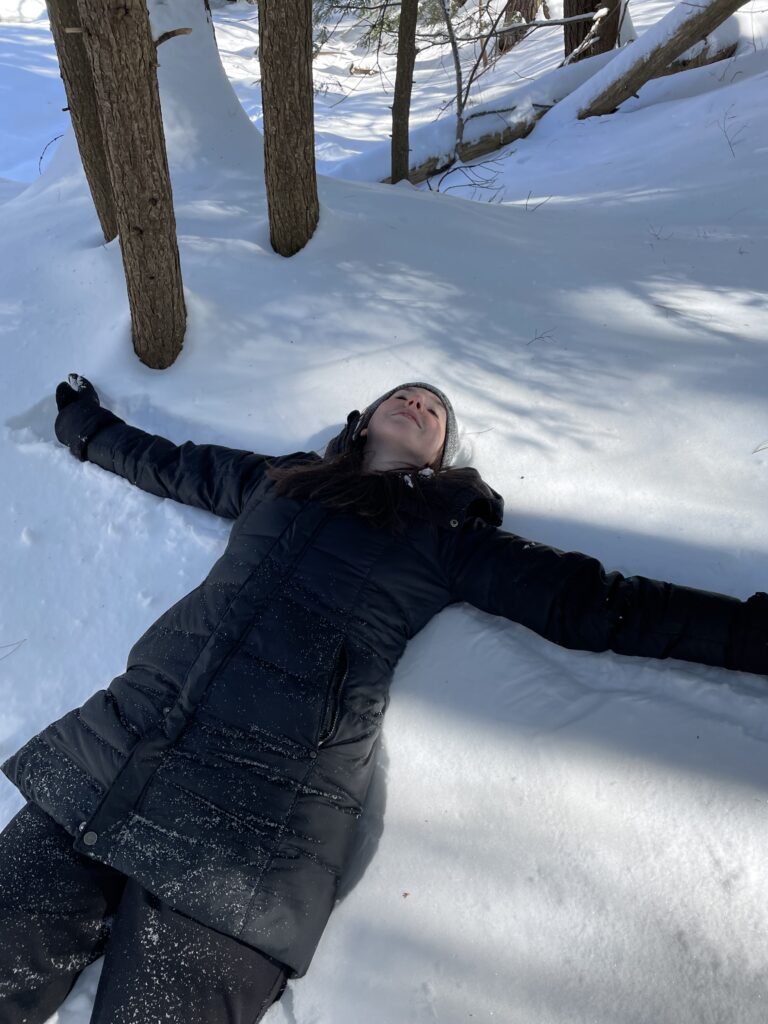
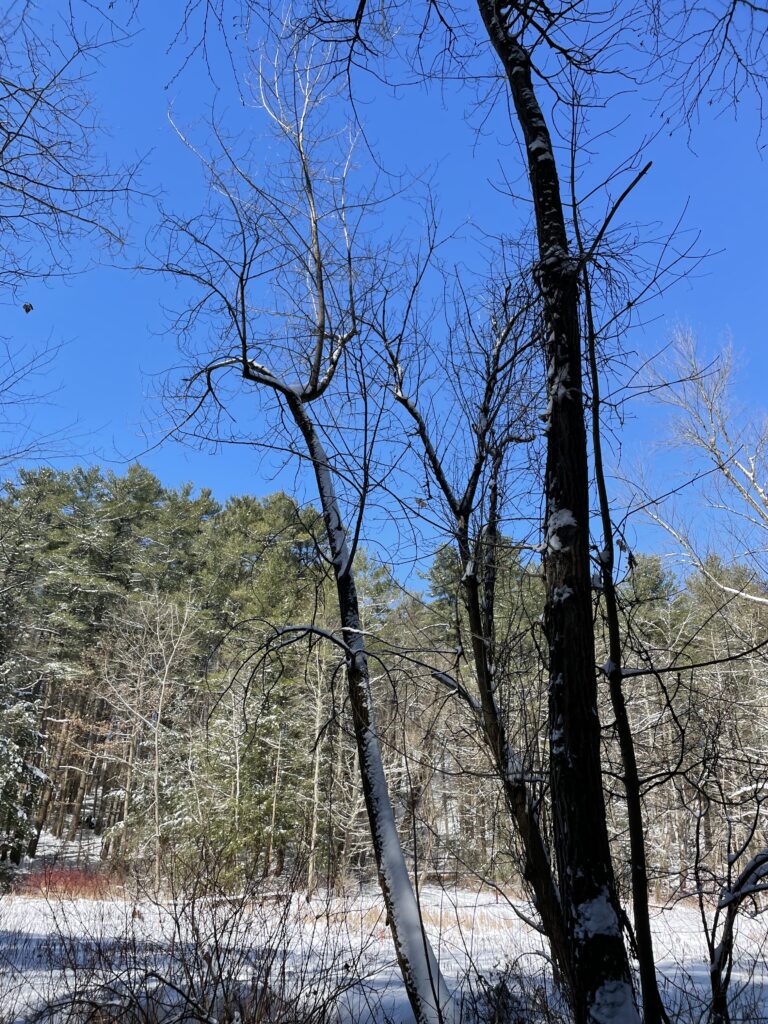
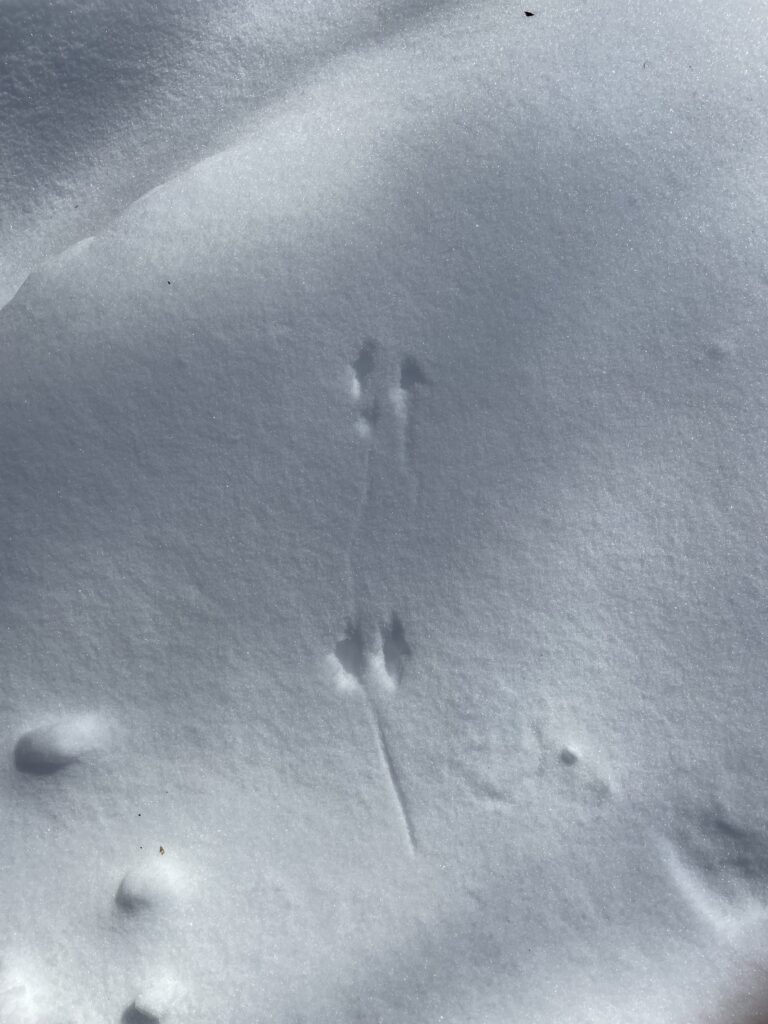
I did take some clippings of some buds while I was down there, and if they start to bud, I will make an update with pictures of them! I believe that I grabbed some young clippings of American Beech and Norway Maple. In other places around town and campus I have noticed some trees, mainly Silver Maple, starting to swell in the size of their buds, which is reassuring because I can’t wait to see more green again!
City Nature Challenge iNaturalist BioBlitz
I had an enjoyable time on this nice Monday Afternoon walking around Potash Brook and identifying species and just spending time out in nature. I hadn’t been back to Potash since the late fall / early winter, so it was nice and refreshing to go back here, especially since it was the site of my original phenology spot. iNaturalist worked surprisingly well in the middle of the woods and identified the species I was taking pictures of pretty accurately, as I even double checked with another app, “Picture This,” which showed similar results. It was also nice knowing that I was contributing to the winning team, and putting us further into the lead so that we could win the Wooly Cup! Ella’s group is simply the best lab group there is.
Overall, I made a total of 21 observations, of which I saw 9 different species. I did not document every single thing I saw, mainly the stuff I found interesting or did not know what it was. I feel like 9 species is wrong, I definitely had more than just 9, but that’s what the app says! My favorite part exploring Potash Brook today was looking for vernal pools because I like to search for amphibians. Just when I thought nothing was out, I stumbled upon a small toad in one of the small pools!
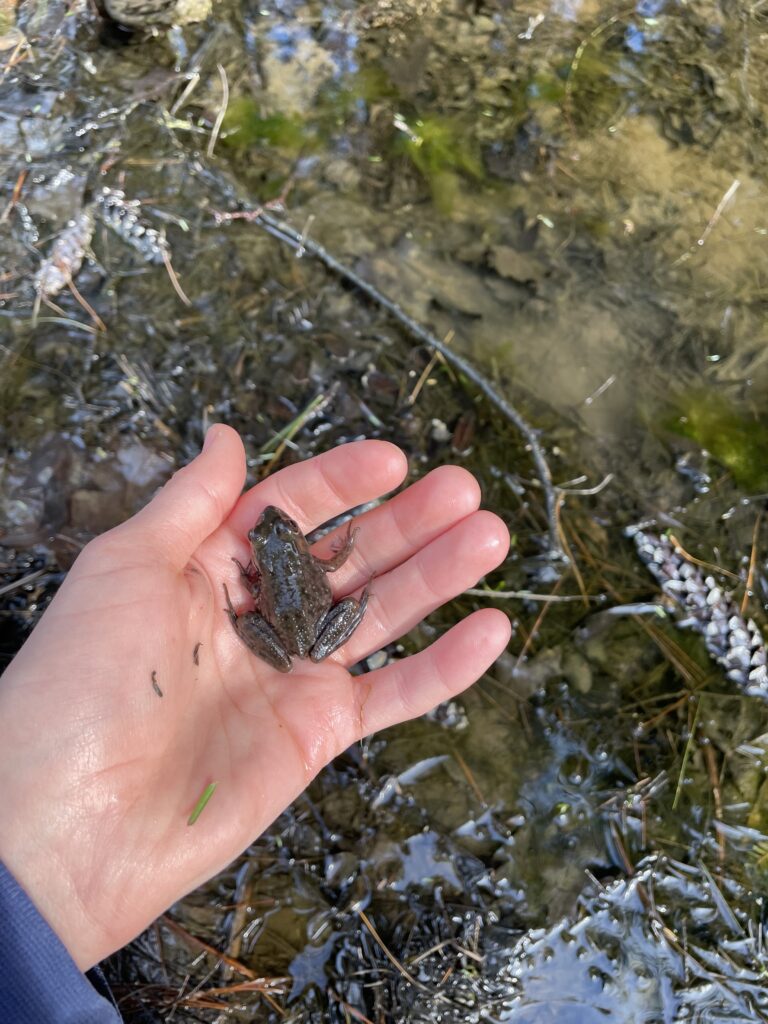
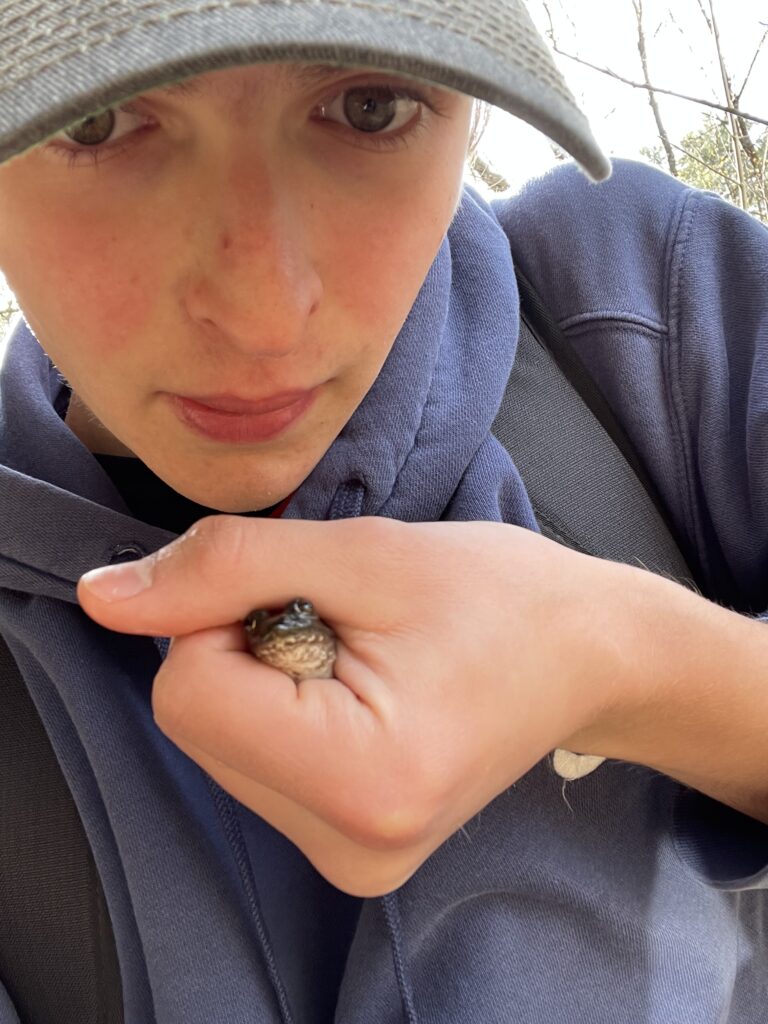
After having my fun with the toad, I headed back home, taking a few more pictures on the way out.
I also found it interesting to look at the other locations participating in this nature challenge. I took a look at Washington DC’s postings, which there were many more of than Burlington’s, and saw that many of the species being identified were different than ours, and were things I haven’t seen before. Many more insects, bugs, and other creatures than what was observed here. It is cool to see the differences in biodiversity from other parts of our country, which is totally massive, allowing room for all sorts of creatures to be spotted within our borders! Next year I will be out on the grind more and try to go to different locations around Burlington that I haven’t / less frequently visit.
Final Phenology Blog Post 🙁
And just like that, the school year is practically over. Time really flew by this year, and it feels like just yesterday that I started this blog at my location back in Potash Brook. Times surely have changed since then, especially since switching to Centennial Woods due to winter travel on a bike being difficult. From late summer to early fall, then throughout the winter and eventually start of spring, I have observed the changing phenology in not just my phenology spot, but throughout Burlington and beyond. I am sad that I won’t get to be here for another month or two to watch spring really kick in, as my location is still budding with life. No real permanent leaves on the large trees have grown in yet, but life is blooming all around me. It is hard to notice some of these changes at my spot, as it is mainly dominated by coniferous trees that are green year-round, but it was refreshing to hear all the birds chirping today. The sound of a Chickadee calling is extremely nostalgic for me, and brings me back to waking up in my bed at home during the summer with the sound of a distant lawnmower in the background.
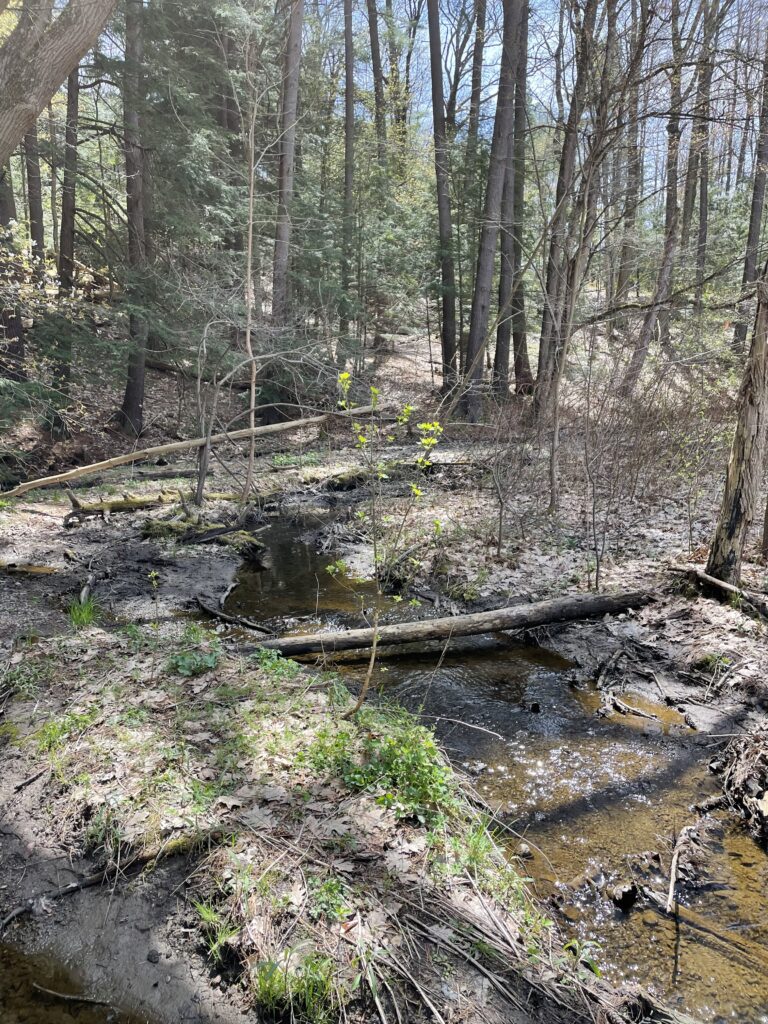
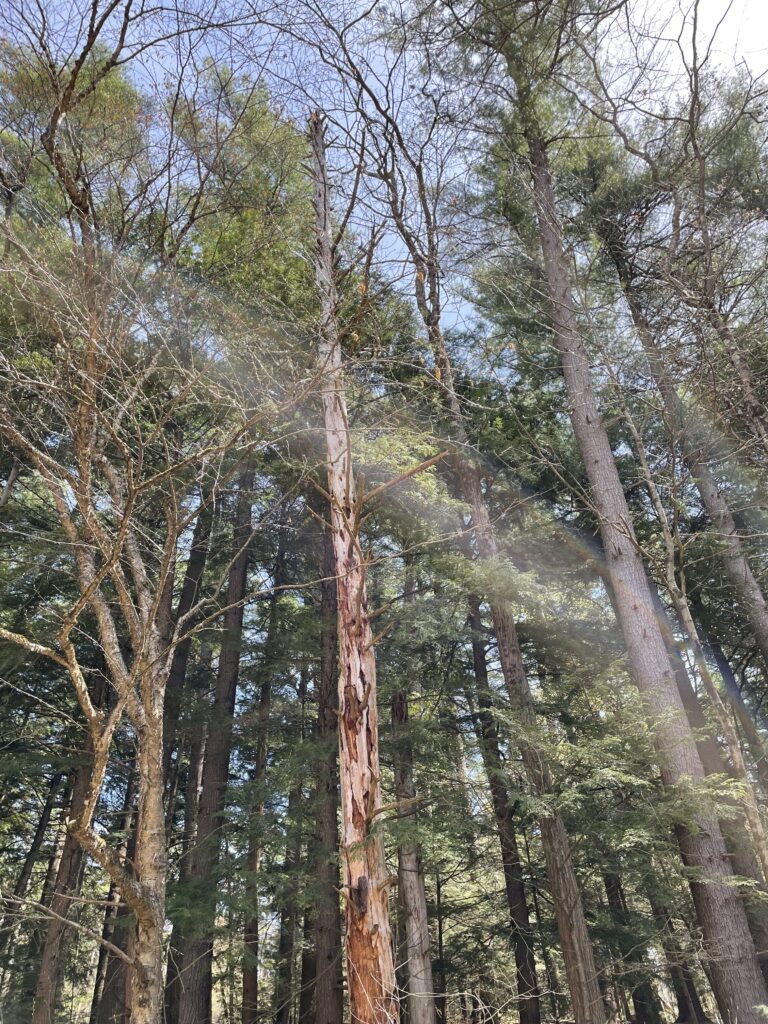
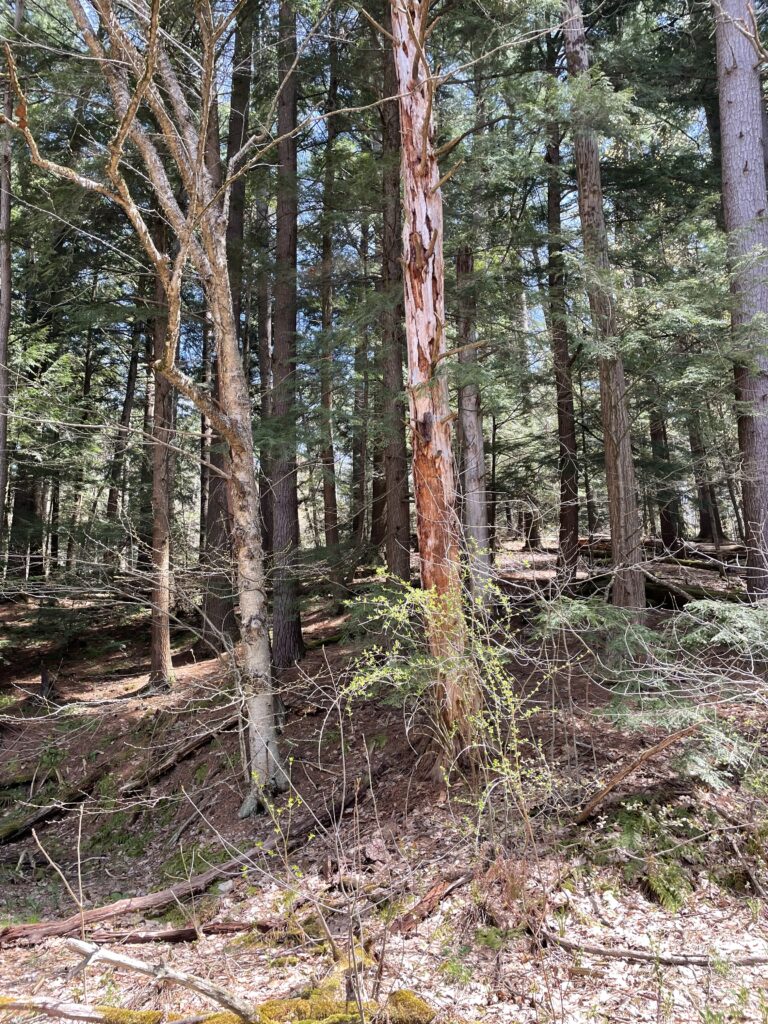
Having life turn back to green from the depressing winter brown is enlightening my spirits for the end of this year, and it will be exciting to see the leaves appear all around me in the coming weeks, putting us back to how it looked like at the start of the semester. It is truly fascinating to see how the seasons change the way a location looks, as an area filled to the brim with ice and snow looks completely different than when it is full of foliage and rushing water. I have seen it all. I have come to love the streams near my locations, and it’s fun to follow them to see where I end up and what creatures I can find along the way. Following the streams guides me to my location. The way the land slopes up and the way the trees sit atop the soil have become engrained in my head, and I am sure to visit my phenology spots next year to see what has changed.
It’s always nice to see others out and about in Centennial Woods when I am walking around in the woods, as seeing others enjoy nature and to use this spot as a place to come and relax and relieve the stresses from school. Coming back to this spot today with the sun beaming down on me was great, and I sat down by a tree and shut my eyes as I listened to the birds chirp. I was suddenly awaken by the sound of the loud ass jets that frequently fly over the area, and it makes me remember that this is just one small area surrounded by urban development. It is a nice retreat from the rest of the world. Centennial is a place used to describe how other woody environments can behave when they are surrounded by urbanized locations and it is always neat to see what kinds of research are being done here and how connected people like me are to this location.
I am part of my place, and anyone who spends time to really take in and appreciate the beauty of nature can become deeply connected with said place. The countless hours I’ve spent in Centennial alone, not just at my spot, makes me feel connected with the majority of the woods, with a heightened preference towards “my spot.” But “my spot” is also the tree’s spot, the flower’s spot, the animal’s spot, and so many other thing’s spot. I look forward to returning to my spot next year and even though I don’t have to, the connections that I have already gained with this area draw me back to it.
Thank you Centennial Woods, and Potash Brook for being places I can go to escape from the stresses of school and life in general. I can’t wait to be reunited with you again!
Christian Baker